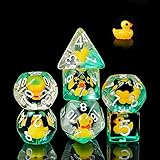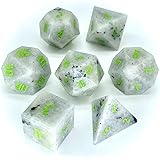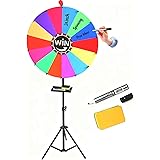While the exact number varies by jurisdiction, casinos worldwide invest billions annually in security and integrity measures. A significant portion of this investment is dedicated to ensuring fair play at the tables, particularly concerning card games. As the video above demonstrates, a crucial aspect of this commitment involves the meticulous process of the Casino Table Shuffle, a practice designed to prevent any form of cheating and uphold the integrity of every game.
Understanding the Foundation of Fair Play: Casino Card Shuffling
For any card game to be truly fair, the deck must be genuinely random. This randomness is paramount to ensuring that no player, including the house, gains an unfair advantage. Consequently, casinos employ specific, highly scrutinized methods for shuffling cards to achieve this essential randomization.
The Table Riffle Shuffle: A First Line of Defense
One of the foundational techniques shown in the video is the Table Riffle Shuffle. This method involves dividing the deck into two halves and then interleaving them while keeping the cards flat on the table. The primary purpose of this technique is to prevent any cards from being accidentally or intentionally exposed to players or dealers during the shuffle.
Despite its importance, a Table Riffle Shuffle alone is often considered insufficient for complete randomization. While it mixes cards efficiently, highly skilled individuals might still attempt to track card groups or influence the outcome, underscoring the need for more robust methods in cheating prevention.
The Casino Table Wash: The Ultimate Randomizer for Cheating Prevention
To truly randomize a deck and make card tracking virtually impossible, casinos utilize a technique known as the Casino Table Wash. This method, sometimes referred to as the “Mahjong Shuffle” in Asian gaming cultures due to its resemblance to the tile-mixing process, involves spreading all the cards face down across the table and thoroughly mixing them with circular motions.
The Magician in the video accurately highlights the extreme effectiveness of this method. By wildly scattering and mixing the cards in this manner, any pre-existing order or potential for card tracking is systematically destroyed. The physical act of tossing some cards into the middle further enhances this disarray, making the Casino Table Wash an almost impenetrable barrier against card manipulation.
The Integrated Approach to Card Integrity
Casinos rarely rely on a single shuffling method; instead, they implement a multi-layered approach to ensure absolute card integrity. This comprehensive strategy combines various shuffles with additional security protocols, safeguarding every game played.
Sequence of Shuffles: Maximizing Randomness
Following a thorough Casino Table Wash, the cards are typically gathered and then subjected to several Table Riffle Shuffles. This sequence is not redundant; rather, it’s a deliberate strategy. The wash provides the initial, high-level randomization, while the subsequent riffle shuffles refine this randomness and prepare the deck for play, all while maintaining strict cheating prevention standards.
This systematic shuffling protocol is particularly crucial for games played with a single deck of cards, such as Texas Hold’em, as mentioned in the video. With fewer cards, the potential for skilled card counters or manipulators to track specific cards might seem higher, yet the rigorous shuffling procedures effectively negate this risk.
The Critical Role of the Card Cut
After the extensive shuffling process, another vital step in maintaining game integrity is the “cut.” The dealer presents the shuffled deck to a player, who then inserts a plastic “cut card” into the deck. The dealer then separates the deck at that point, ensuring that the top cards are not the ones directly influenced by the final shuffle movements.
This seemingly simple act adds another layer of unpredictability and security. It shifts the starting point of the deal, further assuring players that the sequence of cards dealt is truly random and beyond the control of anyone at the table. The cut is a fundamental component of effective cheating prevention in casino environments.
Beyond the Shuffle: A Multi-faceted Security System
While the Casino Table Shuffle is a cornerstone of game security, it is part of a much larger, sophisticated system designed to protect against all forms of cheating. Casinos leave nothing to chance when it comes to the fairness of their games.
Surveillance and Oversight
Modern casinos are equipped with advanced surveillance systems, often referred to as “the Eye in the Sky.” These high-definition cameras monitor every table, every player, and every dealer from multiple angles. Trained surveillance personnel actively watch for unusual patterns, suspicious behavior, or any attempt at card manipulation, significantly bolstering cheating prevention efforts.
Furthermore, floor supervisors and pit bosses constantly patrol the gaming areas, observing play and ensuring all rules and procedures are followed. Their presence provides an immediate layer of human oversight, allowing for quick intervention if any irregularities are detected. These professionals are key in upholding the strict standards set by the casino.
Dealer Training and Protocols
Casino dealers undergo extensive training, not only in game rules and customer service but also in security protocols. They are taught specific, standardized shuffling techniques, as well as how to identify and report suspicious activities. Dealers are often the first line of defense against cheating, as they are intimately familiar with the flow of the game.
Strict protocols govern every action a dealer takes, from handling chips to dealing cards and executing the Casino Table Shuffle. Any deviation from these procedures can lead to disciplinary action, reinforcing the importance of consistent and secure game management. This meticulous training is integral to maintaining trust and fairness in the gaming experience.
The Magician’s Dilemma: Trust and Transparency
The video’s opening question, “Am I allowed in the casinos?”, highlights an interesting point about trust. While a magician’s skills are about creating illusions, in a casino, such skills could be misinterpreted or misused. Hence, the video clarifies that magicians, despite their exceptional card handling abilities, are generally not allowed to handle or shuffle the cards in a casino setting.
This restriction isn’t a slight against magicians but rather a reinforcement of the casino’s unwavering commitment to transparency and absolute randomization. The rigorous procedures, including the thorough Casino Table Shuffle, ensure that no individual, regardless of their skill, can influence the outcome of the game. This focus on verifiable randomness is what allows casinos to operate with confidence and players to participate with peace of mind, knowing that every effort is made in cheating prevention.











